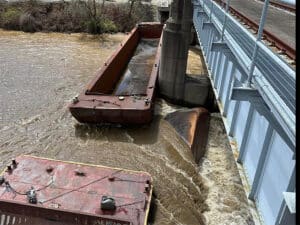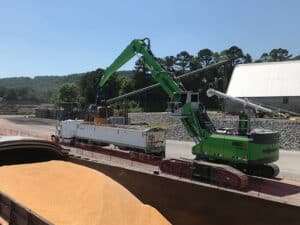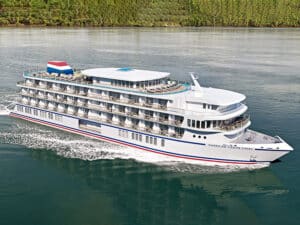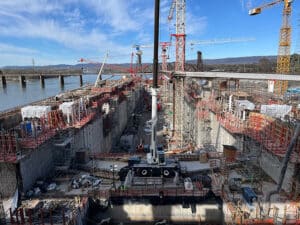
River container vessel project reports progress
Written by Nick Blenkey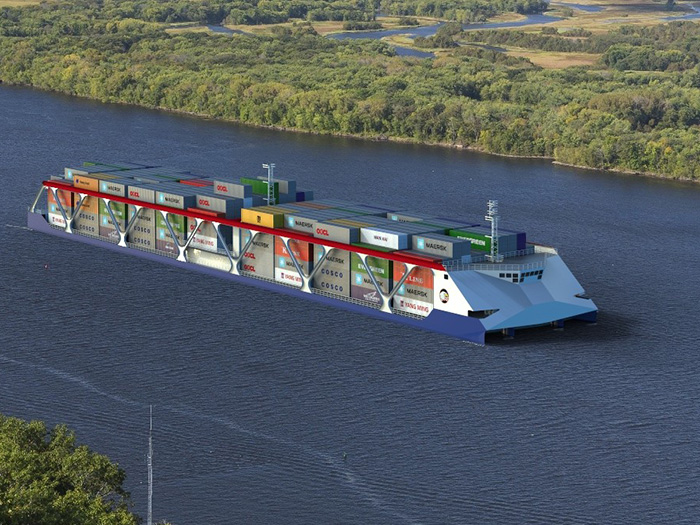
Vessels are designed with two patented features, an exoskeleton hull structure that limits lightship weight and a minimal wake bow structure.
Plans for a new all-water container-on-vessel (COV) trade lane between the Port of Plaquemines on the Lower Mississippi and the Midwest continue to move along.
A key part of the plan, which has been some five years in the making, is the patented, state-of-the-art, purpose-built, exoskeleton-hulled vessels that will carry the containers.
They will come in two classes – the liner vessel that will move containers on the Mississippi River and smaller, hybrid vessels that will operate on tributary rivers.
Developed by Vancouver, B.C.-based Naviform Consulting and Research Ltd., both COV vessel types are designed with two patented features, an exoskeleton hull structure that limits the vessels’ lightship weight to maximize cargo payload, and a minimal wake bow structure that minimizes hull resistance to allow an upriver speed of 13 miles per hour with minimal wake.
When we last reported on the project, back in December, American Patriot Container Transport LLC (APTC), which will own and operate the vessels, said that it had issued a solicitation to seven U.S. shipyards for construction of four of them.
On Monday, APTC CEO Sal Litrico said that the company is “continuing to work closely with interested shipyards to achieve a mutual beneficial result within the next 30 to 45 days.”
Litrico was speaking at FreightWeekSTL, a virtual event held by the St. Louis Regional Freightway in conjunction with the IMX 2022 tradeshow.
The vessels are one of what Litrico calls the three key legs of the COV service. The others are a new regional Gateway Terminal, located on the Gulf Coast in Plaquemines Parish, and the strategically located Midwest partner ports.
You can read more about the progress being made with the ports part of the COV project HERE


